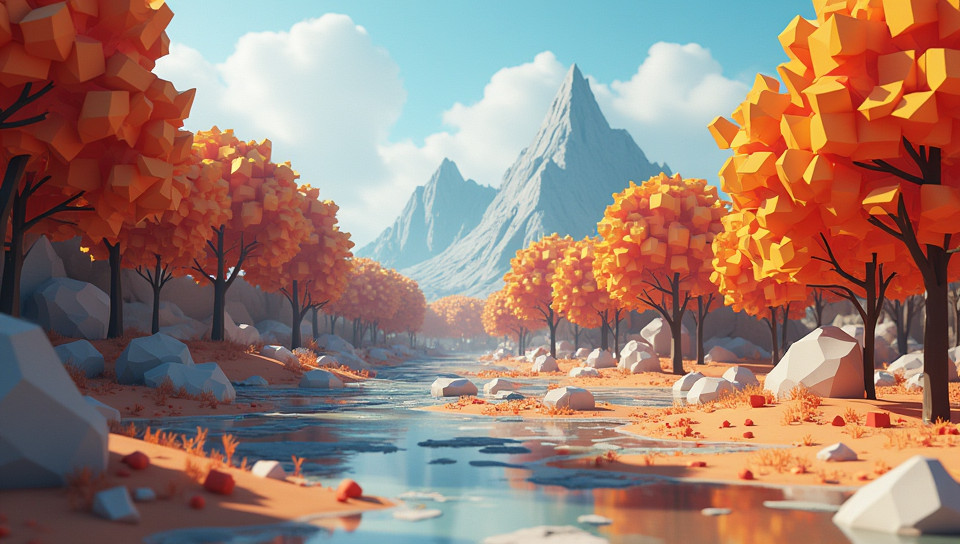Low-poly styles struggle to represent complex scenes 95%

Low-poly styles struggle to represent complex scenes
Imagine being on a scenic hike, surrounded by breathtaking mountains and valleys, only to snap a photo that fails to capture the grandeur of your surroundings. This is the problem faced by low-poly art, a style that has become increasingly popular in recent years due to its simplicity and versatility. However, when it comes to representing complex scenes, low-poly styles often fall short.
The Limitations of Low-Poly Art
Low-poly art involves creating 3D models with minimal polygons, resulting in a stylized and simplified representation of reality. While this style is well-suited for minimalist designs, game development, and architectural visualizations, it has its limitations when it comes to representing complex scenes.
The Challenges of Complexity
Complex scenes often involve multiple elements, such as textures, lighting effects, and intricate details. When trying to represent these scenes using low-poly art, the following issues arise:
- Simplified shapes and forms cannot capture the nuances of real-world objects
- Texture mapping becomes increasingly difficult with complex scenes
- Lighting effects are limited to basic shading models
- Intricate details are lost in the translation to a lower polygon count
The Consequences of Oversimplification
Oversimplifying complex scenes can result in an unfaithful representation of reality. This can lead to disappointment and mistrust among users, particularly in fields such as architecture, engineering, and product design.
Conclusion
Low-poly art is a powerful tool for creating stylized designs and visualizations, but it has its limitations when it comes to representing complex scenes. While there are techniques and workarounds that can help mitigate these issues, the fundamental problem remains: low-poly styles struggle to capture the intricacies of real-world complexity.
In conclusion, while low-poly art is a valuable asset in many design and development contexts, it should be used judiciously when representing complex scenes. By understanding its limitations and exploring alternative solutions, designers and artists can create more accurate and engaging visualizations that truly do justice to their subjects.
- Created by: Juan Flores
- Created at: Jan. 24, 2025, 1:44 p.m.
- ID: 18692









